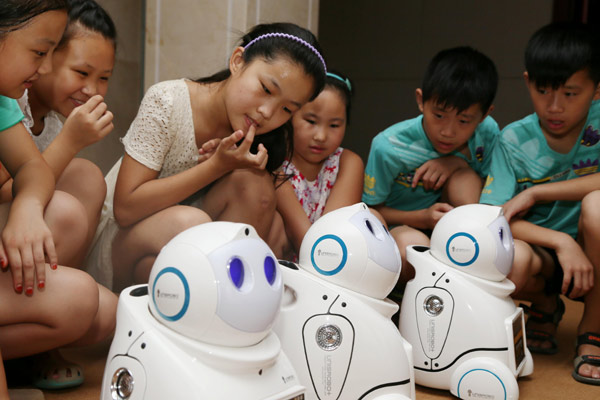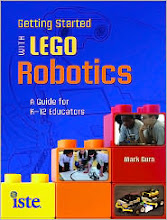Interesting article (from EdTech K-12) on LEGO's recent announcement about the impending release of an item to address Common Core Instructional needs. I don't see why this idea can't successfully be extended to LEGO Robotics and Math Instruction in higher grades, as well. Seems like instructional magic waiting to happen, to me.
Mark
"New Lego Classroom Tool Is Building a Bridge to Common Core Readiness
Lego Group’s education division announced Wednesday that it is preparing to release MoreToMath, a package of 48 block-based exercises that target first- and second-grade math coursework.
The product comes at a time when many elementary school teachers are adapting to tougher standards for mathematics. The new Common Core standards encourage critical thinking, collaboration, technology use and digging deeper into the concepts behind the subject matter.
MoreToMath was designed to help students grasp math problems by modeling them with blocks and solving the problems in creative ways, says Leshia Hoot, Lego Education's senior segment manager for preschool and elementary education.
“We had educators saying they were really struggling with these (Common Core) math practices,” Hoot says. “We designed this to support those practices and real-world problem-solving using Lego bricks.”
Lego's curriculum development team, which is composed of former educators, created the exercises. The instructions are divided into solo and team-based exercises, allowing for differentiated learning. They also incorporate interactive whiteboard software that helps an entire class of students learn together. Using the included Mathbuilder software, teachers can also create their own activities.
In one of the simpler activities, students must construct a snake using only five bricks.
"You quickly realize there are multiple ways of solving this problem, and you have to think through the underlying counting and sequencing to solve it," Hoot says."
Read the full article at its source: http://www.edtechmagazine.com/k12/article/2014/10/new-lego-classroom-tool-building-bridge-common-core-readiness
The product comes at a time when many elementary school teachers are adapting to tougher standards for mathematics. The new Common Core standards encourage critical thinking, collaboration, technology use and digging deeper into the concepts behind the subject matter.
MoreToMath was designed to help students grasp math problems by modeling them with blocks and solving the problems in creative ways, says Leshia Hoot, Lego Education's senior segment manager for preschool and elementary education.
“We had educators saying they were really struggling with these (Common Core) math practices,” Hoot says. “We designed this to support those practices and real-world problem-solving using Lego bricks.”
Lego's curriculum development team, which is composed of former educators, created the exercises. The instructions are divided into solo and team-based exercises, allowing for differentiated learning. They also incorporate interactive whiteboard software that helps an entire class of students learn together. Using the included Mathbuilder software, teachers can also create their own activities.
In one of the simpler activities, students must construct a snake using only five bricks.
"You quickly realize there are multiple ways of solving this problem, and you have to think through the underlying counting and sequencing to solve it," Hoot says."
Read the full article at its source: http://www.edtechmagazine.com/k12/article/2014/10/new-lego-classroom-tool-building-bridge-common-core-readiness









